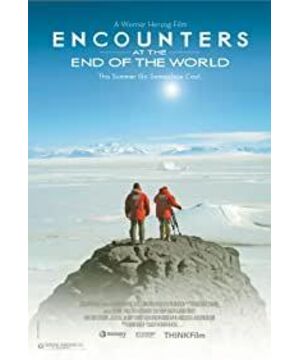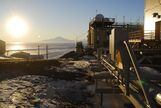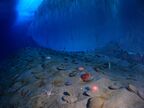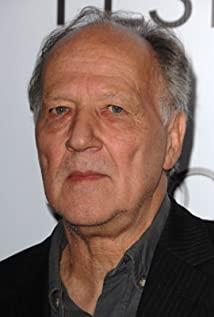(The revised version is in Breakazine #21, which is quite different from the original)
I suddenly had a whimsy that polar bears would appear in Antarctica sooner or later---maybe it would be a badly shot pseudo-science fiction thriller, It is said that scientists brought mutant polar bears to the Antarctic laboratory to study how to deal with global warming, but beasts ran out to eat people; and the penguins were the ones who saved people in the end...
The plot of the sci-fi film may be fictional, but it also contains some truth The foundations and insights of scientists are linked to scientists' imaginations and fears. People in the past were afraid of nature and would be in awe of it; the more people are afraid of nature now, the more they want to control it and change it. There is such a dialectical relationship between man and nature: man wants to conquer nature with technology, but at the same time, he is afraid of the stronger counterattack of nature, so he strengthens the power of control.
How many unconquered places are there on earth? German director Warner. Werner Herzog was invited by Discovery Channel to Antarctica to shoot the documentary "Encounters at the End of the World", and the first order stated that he would not make a film about penguins. His subjects are always people in extreme situations, and those situations themselves. This time he turned the camera on scientists in Antarctica. When He Suo first arrived in Antarctica, when the plane landed at the outer base, he was shocked and found that the Antarctic in front of him did not look like the imagined Antarctic, but the construction sites of major cities. It was a linguist who made him feel very sad. The three poles of the earth (North and South Pole and Mount Everest) have long been conquered by human beings. Nature seems to be contained in a crystal glass ball, a plaything that is left in the hands of human beings.
A glaciologist there said that explorers in the early 20th century encountered those icebergs and snow that could not be broken through the outskirts of Antarctica. Like a little bee, it is alive, spinning in the sea, slowly drifting northward and melting. Melted icebergs become sea water, and sea level rises, which is the consequence of global warming. In the distance, in the name of development, human beings move mountains to fill the sea; it seems to be a decisive battle between two kinds of mountains: the mountains of mud and stone fall into the sea, and the mountains of ice and snow dissolve into tides and cover new shores. So humans can only continue to move mountains, and icebergs continue to melt...
When the sea was still ice, a biologist announced in front of the camera that this was his last dive into the ice sea. He snorkeled under the ice with the camera, without a rope to pull on him, in exchange for more free movement, which is convenient to observe the ecology in the ice sea. However, if he forgets the direction to go back, he will be trapped under this frozen sky forever. The scientist also likes to play guitar and watch old sci-fi movies, such as nuclear radiation creating mutant monsters and the like. There is a character in the play who sees a monster and says, maybe "Bible. The apocalypse mentioned in the Book of Revelation is coming... Science, fantasy and mystery seem to be opposites, but they intersect on the edge of human footprint and knowledge.
Some people believe that they will have it all in the end, while others remain silent. Like the zoologist who has been observing penguins for a long time and is almost speechless, observing without interfering with the lost penguins---the camera is full of whiteness, some penguins are heading for the sea, some are heading for the nest, but there is a penguin, Run alone to the distant ice peak, and it will eventually die on the way. What is that for? Even the zoologist didn't know, he just explained that even if he got the penguin back, it would still go to the iceberg. Herzog still shot penguins, and maybe they have something in common with humans. But instead of saying that the "mad" penguin is like those adventurers who explore the polar regions and scientists who are pursuing the origin of life, it is better to say that it is like a pilgrim, who sacrifices himself as a madman. But Herzog didn't think the penguin was "crazy," and he didn't think much of the "adventurers" such as "somersaulting to the South Pole".
I think film art also has a kind of magic in it, just like the mysteries of nature. Therefore, this movie must not be played on a small screen like a smart phone. It must be watched on a big screen in a theater to see that what the director wants to shoot is the penguin desperately running towards the snowy mountain, and the man risking being lost forever. The sublimity felt when diving under the layers is a perception that many modern people cannot touch: when they use Julius Caesar's "I come, I see, I conquer (I come, I see, I conquer" arrogance to master nature -- like mastering a model of a snowy mountain in a crystal ball, or watching this movie on a cell phone -- all the mysterious, surprising, awesome things All dissipated. However, the endless stream of science fiction movies has revealed a truth: those terrible things are only delayed, hidden, and suppressed; people can never escape. But we can only fight it, or conquer it, or choose? Can we admire its magnificence and mystery in contemplation after an eternal distance?
View more about Encounters at the End of the World reviews








